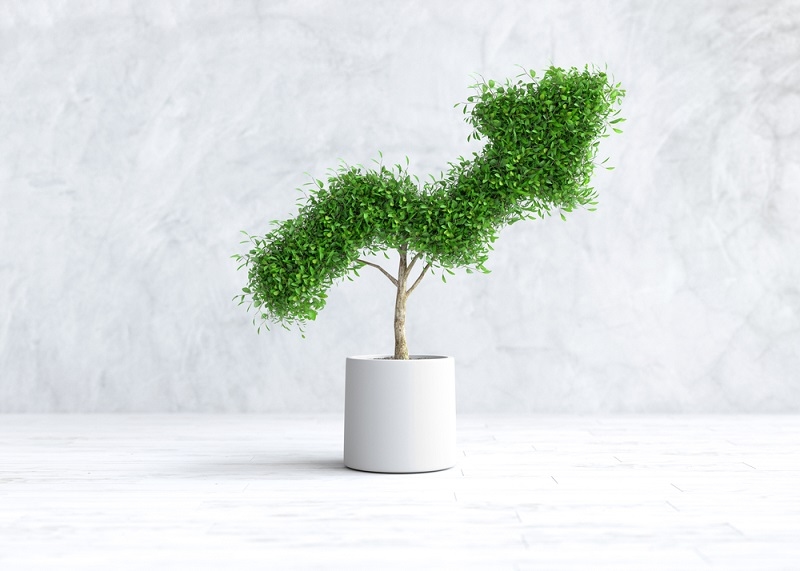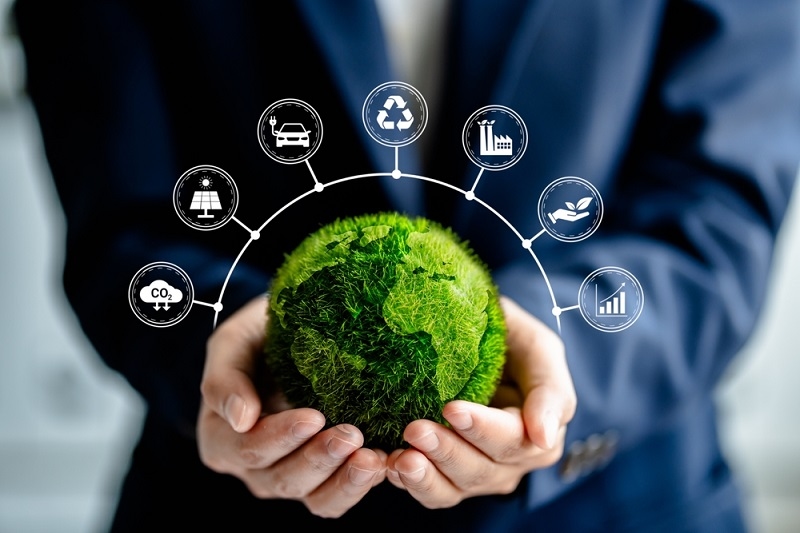
The notion of a green economy has become popular worldwide in recent years. With the constant increase in climate change, pollution, and depletion of resources, the question concerning what is green economy is and how it will solve our future is being asked by more people. In simple terms, the green economy is concerned with mitigating the risks to the environment but enhancing the lives of the people. It entails the establishment of a system that works in favor of the environment, society, and the economy simultaneously. In this blog, we will discuss how the green economy is functioning and how green investments are also leading to the development of this new lifestyle.
Before going into further details, we should learn what the green economy is and what its difference to the usual model is.

A green economy is defined as an economy that seeks to minimize environmental degradation with a view to boosting economic development and social good. The green economy would balance profit with sustainability in contrast to the traditional economy, which is obsessed with profit. It helps the entrepreneurs and industries that utilize resources efficiently, reduce carbon footprint, and conserve nature.
Simply stated, a green economy aims at becoming bigger in a manner that will not degrade the planet.
In the common practice, the applicable green ideas are reflected through:
These examples show how we can have economic progress without damaging nature.
With people, governments, and businesses looking into a cleaner future, sustainable investment is coming to the forefront.
Sustainability investing is investing in companies, projects, or funds that are environmentally and socially aware. The investors enrolled in this practice are never out to seek financial returns. They would also like their money to fund the kind of businesses which are benefitting the world.
This type of sustainable investment is usually concerned with:
Individuals are now waking up to notice that good and profits can go hand in hand.
The green economy presents several benefits related to investing:
Concisely, sustainability investing will allow you to increase your fortunes and improve the world around you.
The shift toward a green economy depends on progress in specific sectors. These areas are leading the way in sustainability.
Clean energy is the heart of the green economy. Solar panels, wind turbines, hydroelectric power, and bioenergy are replacing fossil fuels. These sources don’t produce harmful emissions and can be renewed naturally.
Governments and private investors are putting more money into clean energy than ever before.
Cars, trucks, buses, and even airplanes are being redesigned to reduce emissions. Electric vehicles (EVs) are becoming more common. Bike lanes, car-sharing apps, and public transit systems are also part of green economy strategies.
Traditional farming often uses chemicals that damage soil and water. A green economy supports sustainable farming methods that protect the environment and produce healthier food.
Tech-driven solutions like vertical farming, organic farming, and precision agriculture help save water, reduce waste, and use fewer harmful chemicals.
Instead of throwing things away, a circular economy focuses on reusing, recycling, and repairing products. This reduces the amount of waste that ends up in landfills.
Recycling companies and eco-friendly packaging businesses are growing fast. They play a big role in building a green economy.
You don’t need to be a billionaire or government leader to support a green economy. Every day choices make a big difference.
Choose products that are reusable, recyclable, or made from natural materials. Support companies that practice fair trade and use ethical labor.
You can start sustainable investing by choosing mutual funds or exchange-traded funds (ETFs) that focus on green companies. These funds often screen out companies that pollute or harm society.
Switch to LED bulbs, unplug devices when not in use, and consider solar panels if you can. These steps save you money and reduce your carbon footprint.
Vote for leaders and policies that promote a green economy. You can also join local eco-groups, participate in clean-up drives, or help raise awareness in your community.
While the idea of a green economy is exciting, it’s not without challenges.
Green technologies like solar panels or electric cars can cost more initially. However, they often save money over time. Incentives and subsidies can help reduce these upfront costs.
Some industries are used to doing things the old way and may resist moving to greener methods. Education, training, and financial support are needed to help these businesses make the shift.
A successful green economy needs strong government support. Laws, tax benefits, and public investments can help create the right environment for green businesses to grow.
The rise of sustainability investing is not just an economic trend. It’s a growing movement that is reshaping finance.
Governments and companies are now offering green bonds. These are loans used only for environmentally friendly projects. Investors are showing more interest in such tools because they offer both profit and purpose.
The green economy is also getting innovations as more individuals are getting behind the green economy. Clean battery technology, AI-facilitated waste sorting, and carbon capture machines are only a few examples.
Gen Z and millennial people are more ecologically aware. More often, they opt to purchase brands that reflect their beliefs and will invest in companies that are concerned with sustainability.
The green economy is no longer a successful attempt at saving the world. It is all about constructing a better, equal, and more integrated world for all human beings. Be it as a student, working professional, a business owner, or an investor, you can make a change. By promoting sustainable investing, taking smarter decisions, and getting others to follow suit, we can create a future that will be not only profitable but also sustainable.
This content was created by AI